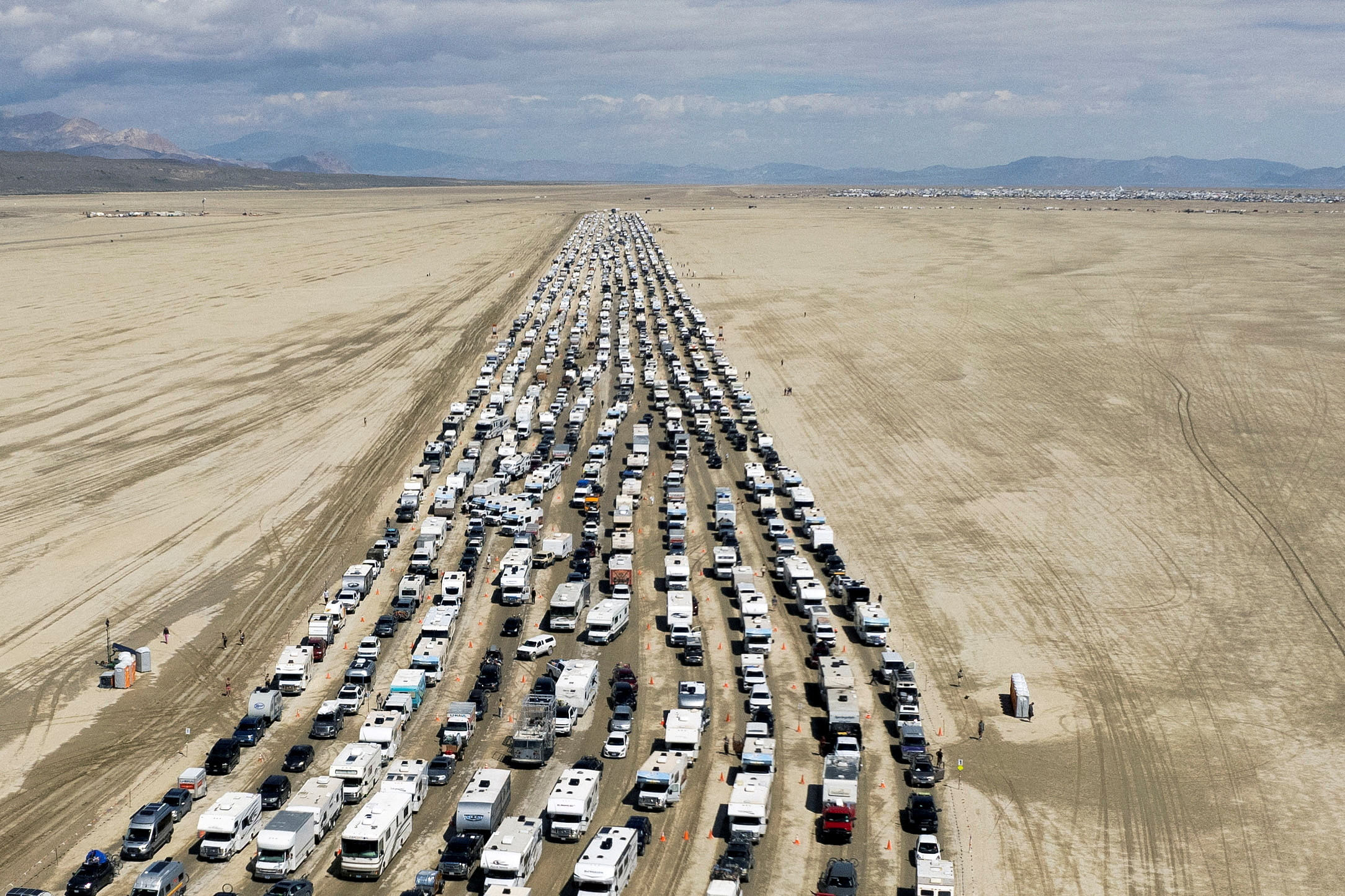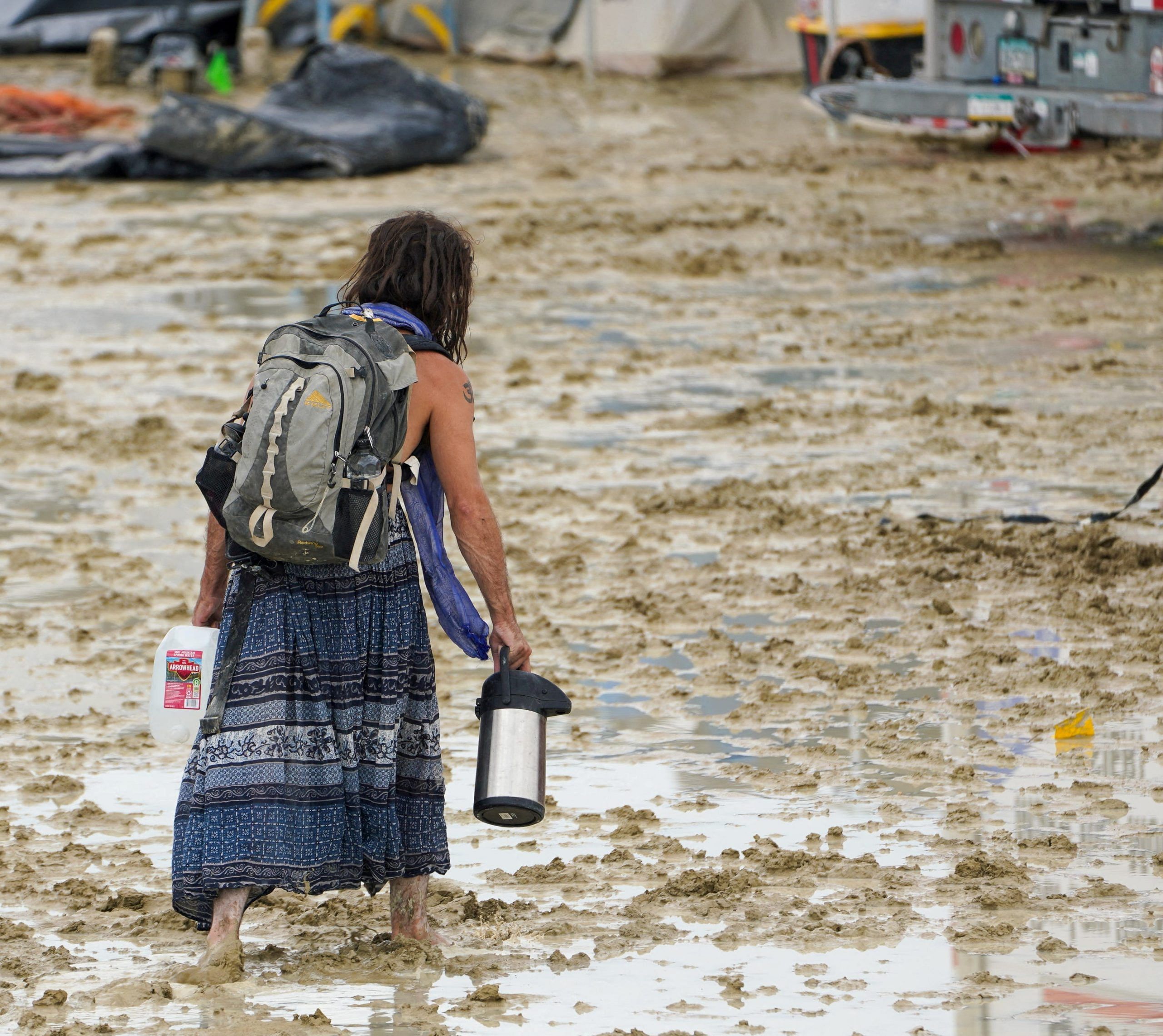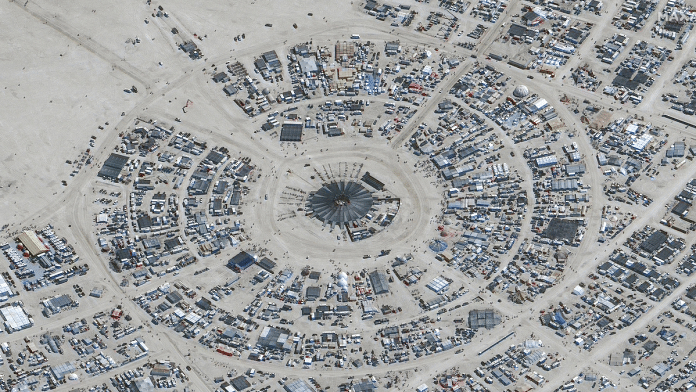New Delhi: After hours of anxiety, flaring tempers and even clashes, those at the weeklong Burning Man festival finally queued up Monday to leave Nevada’s Black Rock Desert.
This year, a rainstorm had turned one of America’s biggest and most popular counterculture events into a muddy mess and left over 72,000 festival goers — or burners, as they call themselves — stranded.
The unusual situation also led to the Burning Man Project — organisers of the annual event — lifting its driving ban. What followed was something that has been described by organisers as an “exodus” — thousands of cars lining up in the 5-mile (8 km) dirt road leading to the nearest highway, all waiting to leave.

This “exodus” took 5.5 hours to clear up, organisers said. In the meantime, tempers soared, with authorities reporting clashes among festival goers. One death was reported, and authorities have promised an investigation.
All of this is unusual for the 37-year-old festival — frequently described by the media as a celebration of art and self-expression — that brings tens of thousands of people together every year.
Here’s a breakdown of what the Burning Man is all about and what went wrong this year.
Also Read: Karachi and Comic Con not oxymoron. This Pakistani city has a subculture of anime
An event of art and self-expression
According to the Burning Man Project, the festival is “a global ecosystem of artists, makers, and community organizers who co-create art, events, and local initiatives around the world”.
It’s a counterculture event — a gathering for people who reject established social values and practices to embrace a mode of life opposed to the mainstream.
Each year, thousands of revellers from around the world gather at a makeshift city called Black Rock City to burn a large figurine called “The Man” on the penultimate day of the festival. During the event, burners set up camps, make art and become part of a self-sufficient community for a week.
The tradition dates back to the summer solstice of 1986, when two artists, Larry Harvey and Jerry James, built an eight-feet tall effigy at San Francisco’s Baker Beach and set it on fire.
Soon, a small crowd gathered to watch the burning figure, thus starting a tradition that has continued without break (except during the pandemic years of 2020 and 2021).
Although the festival was initially held at Baker Beach, it moved to the Nevada desert, located 110 miles (177 km) north of Reno and 15 miles (25 km) from the closest settlement, in 1991.
In 2014, the festival recorded its largest ever “Man”, which towered at 105 feet.
This year, the festival began on 27 August and a regular ticket cost $575.
Every year, the organisers set a theme for the festival, announced through their website. The theme for this year was ‘Animalia’.
While the festival enjoys wide patronage, it also faces criticism. Over the years, “burners” have been reportedly criticised for leaving behind trash not only in the desert but also in nearby cities. Locals in Reno city also complained about pollution and traffic congestion during the course of the festival.
In response to these complaints, event organisers have frequently urged attendees to refrain from such behaviour saying it reflects poorly on the festival.
What happened this year
One of the largest and flattest areas on Earth, the Black Rock Desert spans 200 sq miles (520 sq.km, about quarter of the size of Delhi) and sits atop Lake Lahontan, a deep but now dried up lake that, according to the US Geological Society, had existed about 15,000 years ago.

Geologically, the area is described as playa — flat, dried-up land, especially a desert basin from which water evaporates quickly. When completely dry, the desert is covered in a hard clay layer that is frequently covered in snow-white salty material.
In recent years, the area near the desert’s southern edge has hosted turbojet car races.
Heavy rain in the desert can lead to slush and even flash floods in the area, although even at its deepest point, the water is reportedly no more than a foot.
This was what happened this year. According to reports, on 1 September, the festival site received more than 13 mm of rainfall — higher than the expected rainfall of 5.4 mm in the Reno area for the entire month of September.
The heavy rain caused authorities to close all roads from the nearest cities — Reno and Nevada — leaving festival goers stranded.
Compounding the problems was the flood and the foot deep mud at the site of the festival.
Meanwhile, there were also claims of an Ebola outbreak at the festival, which officials have dismissed, show reports.
How ‘burners’ got out
Roads to the desert and the festival reopened Monday night, leading to long queues of vehicles even before the burning of the “Man”.
The traffic jam even caused festival goers to abandon vehicles. A report in BBC quoted Pershing County Sheriff Jerry Allen as saying large amounts of property and trash had been strewn around the site, including cars.
On Saturday, American DJ Diplo shared a video of himself and comedian Chris Rock riding in the back of a fan’s pick-up truck. In his video, posted on Instagram, he said they had to walk 10 km (6 miles) through the mud before they managed to hitch a ride.
Meanwhile, those stranded in the desert posted photos and videos of the mud and slush in the area.
But while many lined up to leave, some revellers chose to stay back to witness the festival’s giant effigy burn Monday night — two days past schedule.
(Edited by Uttara Ramaswamy)
Also Read: Hindu pride hip-hop: Indian rappers are now singing about Kaali, Shiva, Kashmiri Pandits



